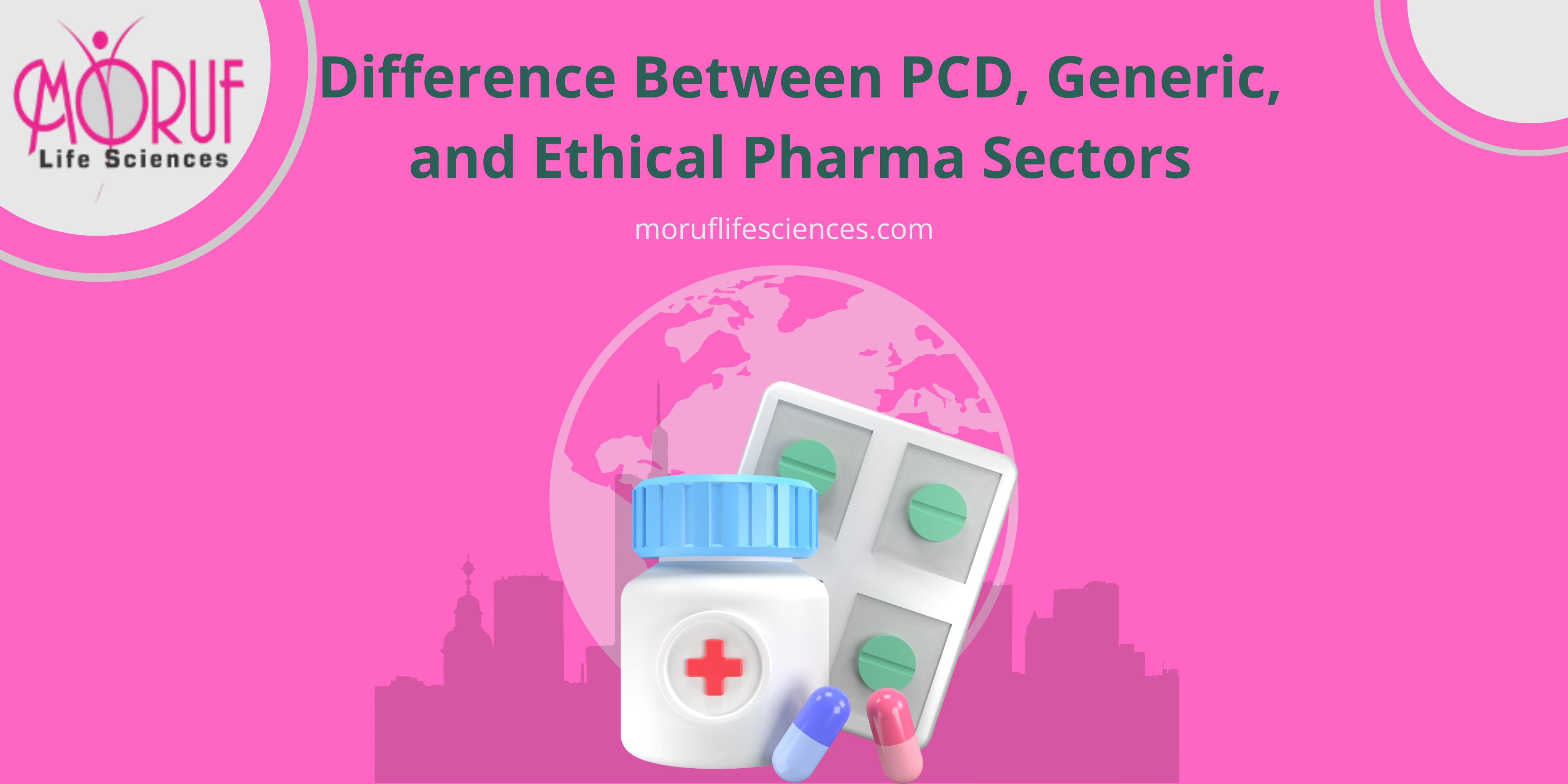-

-

call us
+91-9888163636



Difference Between PCD, Generic, and Ethical Pharma Sectors - The Pharmaceutical Industry is among the most dynamic and prominent industries in India. With the growing demand for therapeutic products, the Pharmaceutical landscape is rapidly evolving. The pharmaceutical industry is broadly categorized into three important segments, such as PCD, Generic, and Ethical Pharma Sector, which operate with distinct business models, objectives, and approaches. While they all share the common motive of delivering effective drugs to patients, the way they function, promote, and distribute products differs significantly. The PCD Pharma Franchise Model is one of the most widely adopted and established business models among the stakeholders. It operates on a franchise model, allowing companies to market and distribute drugs under their brand names with minimal regulatory and investment.
The Generic Pharma Sector plays a vital role in affordability by manufacturing non-patented versions of branded medicines. Hence, it contains the same active ingredients, safety, quality, and intended use but is sold under non-proprietary names after patent expiration. It produces cost-effective alternatives to branded medication. On the other hand, the Ethical Pharma Sector, also known as branded or innovator pharma, is mostly research-oriented, adhering to strict regulatory standards and driven by innovation. Understanding the Difference Between PCD, Generic, and Ethical Pharma Sectors is vital for stakeholders navigating the pharmaceutical industry strategically. Therefore, Moruf Life Sciences presents a detailed overview of this topic to provide readers with an in-depth knowledge.
Propaganda-cum-Disrtribution is a franchise-based business model, where pharma companies appoint franchise partners or distributors who get exclusive monopoly rights to market and sell products under the company's brand name, in a designated area. This allows the company to market and promote its products with minimal spending, while distributors gain access to branded products. With benefits like Monopoly rights, eliminating the intra-brand competition, Free marketing and promotional rights. It is a lucrative business opportunity for small entrepreneurs seeking higher profit margins with minimal investments.
The generic pharmaceutical sector acts as a cornerstone in supplying and manufacturing medicines more affordable and accessible in countries like India, where healthcare costs can be a burden for many patients. These are the Non-branded versions of innovator drugs containing identical active components, dosage forms, safety measures, quality standards, and medical applications. The quality, performance, and efficacy are equivalent to those of branded drugs. It is an economically effective and efficient business.
The medicines are supplied in bulk through wholesalers, stockists, retail pharmacies, and government supply chains. It also requires large-scale manufacturing and bulk distribution methods.
A list of Characteristics and Functions of the Generic Pharma segment has been mentioned below:
The Ethical Pharma is one of the oldest and effective business models; it relies heavily on direct doctor-driven prescriptions. It comprises those Pharmaceutical companies that manufacture, develop, and sell prescription-based medicines under patented brand names.
All the manufactured products undergo intense clinical trials, quality checks, and regulatory approvals (like FDA, DCGI) before reaching the market. The Medical representatives play a critical role by regularly visiting doctors, hospitals, and clinics to promote medicines. They act as the brand ambassadors to promote the pharmaceutical products.
It focuses on innovation, quality, and patient safety. A list of advantages has been mentioned below:
As both the PCD and Generic Pharma Sector focus on affordability and distribution, ethical pharma drives medical advancements and ensures a patient-centric approach.
| Aspect | PCD Pharma Sector | Generic Pharma Sector | Ethical Pharma Sector |
|---|---|---|---|
| Business Model | Franchise-based distribution under a company’s brand name. | Manufacture and sale of off-patent drugs (branded or non-branded generics). | Research-driven companies that develop, patent, and market branded drugs. |
| Focus | Market expansion through distributors and franchise partners. | Affordable medicines and large-scale production. | Innovation, new drug discovery, and strong brand positioning. |
| Investment Requirement | Low to medium, including stock purchase and marketing. | Medium to high, manufacturing setup, compliance. | Very high R&D, trials, and global approvals |
| Profit Margins | Moderate to high (brand reputation and monopoly rights). | Low to moderate (price-sensitive, high competition). | High (patented products with limited competition). |
| Marketing Strategy | Monopoly-based rights, promotional inputs, and samples. | Bulk sales, low-cost promotions, and affordability-driven. | Strong brand promotion, medical reps, and doctor engagement. |
| Growth Opportunities | High in rural and semi-urban areas with low entry barriers. | High in developing countries, needing cost-effective drugs. | High in developed markets with a strong focus on innovation. |
The pharmaceutical industry presents diverse pathways for business and healthcare delivery through its three major sectors. While PCD relies on franchise partnerships, generics emphasize affordability, and ethical pharma prioritizes innovation and patient safety. The difference between PCD, Generic, and Ethical Pharma Sector has been discussed above.